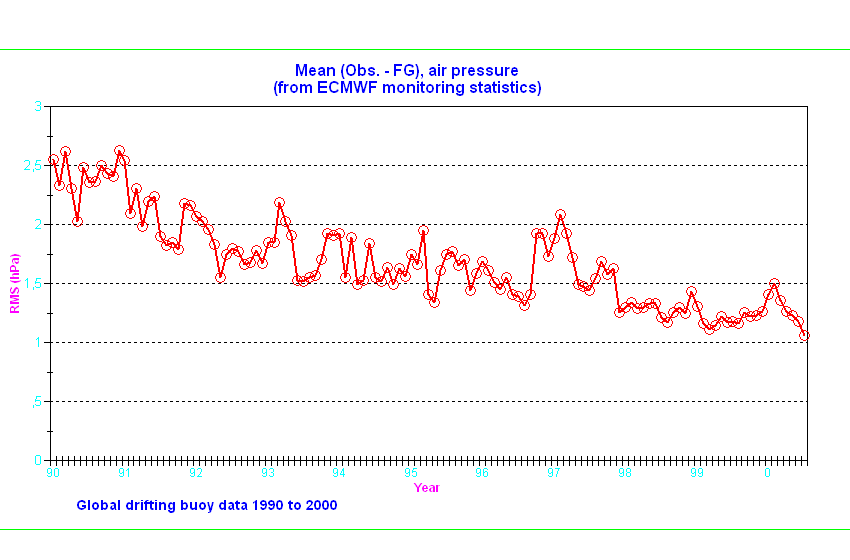DATA QUALITY MONITORING
DATA QUALITY MONITORING
[ Introduction ] [ Participating Centres ] [ Lead Centre Monitoring ] [ Procedures and Formats ] [ Report Types ] [ Related Links ]
Introduction
For the assessment of data quality a number of data processing centres compare the information received from each of the different observational elements with the first-guess numerical short-term forecast. Using agreed procedures and formats (Attachment II.8, Manual on the GDPS) that are regularly reviewed and updated, the participating centres produce monthly reports of the various observation types that are of consistently low quality. These 'suspect' lists are exchanged between participating centres, and communicated to the originating country for remedial action. To assist in this action national focal points have been designated. This feedback leads to improvements in the quality of observational data and ulimately to an improved initial analysis state and better model forecasts.
In addition to the monthly monitoring performed by many centres, CSB has designated Lead Centres to be responsible for monitoring particular data types, and to generate six-monthly reports on suspected low quality stations/platforms. These reports are distributed by WMO to Members so that they can take appropriate remedial action, again with the assistance of the nationally designated focal points.

This graph is an example of the positive results that have been obtained through application of data monitoring activities. In this case the RMS differences between buoy air pressur
